第150章 HOME LIBRARIES(1)
One of the first librarians to give to library work with children a full appreciation of its possibilities in extension work was Salome Cutler Fairchild.An address given by her on January 10,1898,before the New York Library Association and the New York Library Club on the development of the home library work in Albany describes some modifications of Mr.Birtwell's plan,and is especially interesting because it indicates the relation of this method of extension work to the "new philanthropy."Mary Salome Cutler was born in Dalton,Mass.,in 1855,was educated at Mt.Holyoke Seminary,and received the degree of B.L.S.from the University of the State of New York in 1891.In 1897she was married to the Rev.Edwin Milton Fairchild.From 1884to 1889she was cataloguer in the Columbia College Library and Instructor in the Columbia College Library School.She became Vice-Director of the New York State Library School in 1889and remained there until 1905.Since that time she has been a lecturer on selection of books and American libraries.Mrs.
Fairchild was chairman of the committee in charge of the library exhibit of the World's Columbian Exposition in Chicago in 1893and was identified with the publication of the A.L.A.Catalog.
It is probable that some of the readers of the Journal are unfamiliar with the idea of the home library.In a few words,this is its motive and its plan:To help the children of the poor in developing and ennobling their lives by giving them books and a friend.
The home library idea was evolved,not by a librarian,but by Mr.
Charles W.Birtwell,secretary of the Children's Aid Society in Boston,a very old non-sectarian society.It grew up in a most natural way.He fell into the habit of lending books to poor children of his acquaintance and of talking with them about the books after they had been read.This took time,and the result was organization.The children were formed into little groups,books were bought systematically,and his friends were interested to form regular visitors.
And so a home library involves a group of 10poor children,a library of 20carefully selected books placed in the home of one of the children and circulating among them all,a visitor,who should be a person of rare wisdom and sympathy,who meets the children once a week,talks over the books with them,and during the hour gives them all possible help in any way she chooses.
Each group contains both boys and girls from eight to fifteen years of age.
There are several groups of children and several little libraries.Once in three or four months the libraries pass from one group to another.The personal element supplied by the visitor is quite as valuable as the influence of the books.It is hard to tell just what the visitor does.It is perhaps simplest to say that she is a friend to the children and that she studies how to help them.That means a great deal.The plan is elastic and each visitor chooses her own methods.
Doubtless many librarians listened to Mr.Charles Birtwell's paper on home libraries at the Lake Placid conference,September,1894,and are thoroughly familiar with the central thought and its application in the parent libraries in Boston.To such Iwould like to call attention to some modifications of the plan in the Albany libraries,to a few new points which we have worked out and old ones which we have emphasized.
It goes without saying that each book is read carefully by at least one member of the selection committee with special reference to the home libraries.It is not enough that a competent judge has read it without having that in mind.We are constantly tempted to give these readers books a little too old for them.They enjoy books which children who have always been familiar with books would be ready for three or four years earlier.
Visitors should be prepared for disappointment in the quality of the reading that is done.At the beginning of my work with the children I was delighted with their enthusiasm over the books.To be sure their choice was often determined by the attractiveness of the cover or big type,or the bigness or littleness of the book.I soon found that it was a rare thing for a child to read a book through.They would often say with pride "I read 30or 60pages"and were unwilling to take the book again,though claiming to like it.It is a slow process,but now after over two years they read with much more enjoyment and thoroughness.It was a long step ahead when the brightest child in the group began to read the continued stories in the St.Nicholas and to watch eagerly for the next number.
I wonder if these children are not in a way a type of the readers in our larger libraries.We fondly hope that there will be an immediate and hearty acceptance of the good things which we have spread out with such lavish expenditure of our own life,later we learn that even among the educated classes the genuine reading habit is the heritage of the few and among the many must be the result of a slow and steady growth.
I think we have improved on the Boston plan in dealing with the magazines.They take nine different periodicals and break the year up so that with one library of 15books the children have parts of five periodicals.We put 18books in each library and subscribe regularly for each group of children for St.Nicholas and Youth's Companion.In some of the groups the children have not cared for Youth's Companion.It has been given a fair trial since July,1894,and we have just substituted Harper's Round Table as an experiment.Other groups,however,are devoted to the Youth's Companion.St.Nicholas is a prime favorite with all.